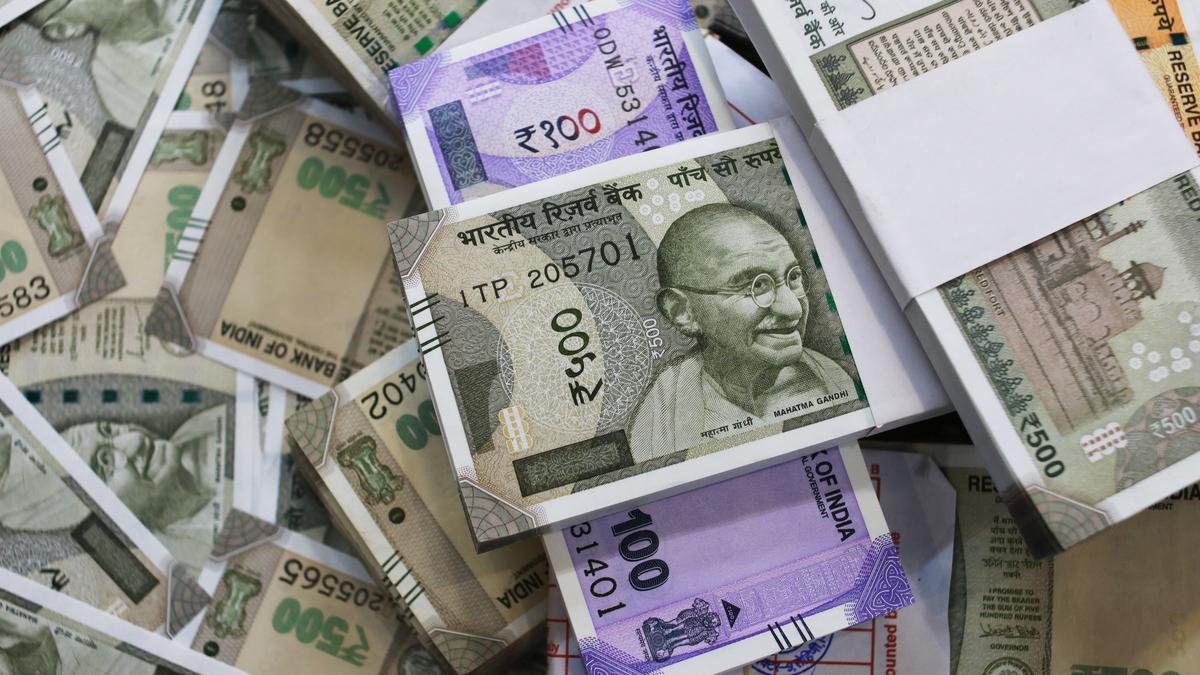 |
|
The Indian Rupee experienced a significant decline on Monday, weakening by almost 0.6% or 49 paise to breach the 87 mark against the US dollar. This downturn occurred amidst a broader sell-off in emerging market currencies and stock markets across Asia and Europe. The trigger for this global market instability was President Donald Trump's imposition of higher tariffs on Canada, Mexico, and China. The Rupee, which had previously crossed the 86 mark against the dollar on January 10, ultimately closed at 87.11 after briefly touching 87.3 during the trading day. The weakening of the Rupee reflects a larger trend of the strengthening US dollar, impacting not only emerging markets but also developed economies. The interconnectedness of the global financial system highlights how events in one region can quickly ripple outward, influencing markets worldwide.
A senior official from the Indian Finance Ministry conveyed the government's calm response to the Rupee's trajectory. The official characterized the situation as a consequence of global uncertainty, emphasizing that India does not rely on exchange rate manipulation to boost trade. The primary focus, according to the official, is on managing volatility rather than achieving a specific exchange rate target. Economic Affairs Secretary Ajay Seth, in an interview with The Hindu, attributed the dollar's appreciation to a rise in the US Dollar Index, which had surged above 109, reflecting the dollar's strengthening against numerous currencies. He emphasized that India's policy, aligned with the Reserve Bank of India's approach, centers on mitigating volatility at any dollar level. While appreciating the dollar increases import costs, it simultaneously enhances the competitiveness of Indian exports.
Secretary Seth underscored India's consistent avoidance of using exchange rate policies to artificially stimulate exports, deeming such methods unsustainable for long-term growth. He highlighted the nation's commitment to improving export competitiveness through quality enhancement rather than currency manipulation. The official acknowledged the challenges posed by US tariff increases but stressed India's focus on managing the uncertainty resulting from such actions. The government's approach emphasizes sovereign decision-making, accepting that other nations act in their perceived best interests. India's strategic response centers on navigating this uncertainty and maintaining its economic momentum, despite the external headwinds. The Secretary explained that while external factors like global growth rates are beyond India's immediate control, the nation must proactively mitigate their impact and maintain its economic progress.
The Indian government's overarching strategy involves bolstering self-reliance by cultivating competitive advantages in sectors lacking them. This requires a nuanced approach, as pointed out by Secretary Seth. He highlighted the importance of avoiding cost disadvantages through tariff policies and regulations, emphasizing the need for regulatory streamlining. The recent budget, according to Seth, incorporates measures aimed at addressing these regulatory inefficiencies. In essence, the Indian government's response is multi-faceted, incorporating proactive measures to strengthen the domestic economy, manage currency volatility, and navigate the complexities of a globalized market impacted by fluctuating currency values and protectionist trade policies. The strategy emphasizes sustainable long-term growth through internal improvements rather than short-term exchange rate adjustments. This approach acknowledges external economic pressures but underscores India's commitment to managing these challenges to maintain its economic trajectory.
The current situation highlights the vulnerability of emerging market economies to shifts in global financial conditions, particularly in response to decisions made by major global powers. The impact of the US tariff policies underscores the interconnectedness of the global economy and the ripple effects of protectionist measures. India's strategy, focusing on internal economic strength and managing volatility, reflects a pragmatic approach to navigating these challenges. The emphasis on self-reliance and regulatory efficiency underscores a long-term vision focused on sustainable growth, independent of short-term fluctuations in global markets. The success of this strategy will depend on India's ability to effectively implement its policy initiatives and foster a robust domestic economic environment capable of weathering external economic shocks.
Source: Amid global tumult, Rupee breaches 87 against dollar
